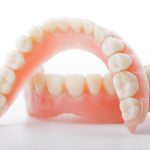In case of a severe dental caries the only solution is usually root canal treatment.
Root canal treatment and filling
Massive dental cavity may make root canal treatment essential if the cavity reaches the chamber – where vessels and nerves are located – and causes pulpitis. Inflammation may occur if the tooth’s blood circulation stops, and bacteria may proliferate in the parodontium and in the surrounding bones. The so-evolved inflamed tooth may cause other inflammations in other parts of the human body. During root canal treatment we clean the alveolus inside the tooth.
Dental pulp removal is executed with local anaesthesia. Sometimes inflammation may cause unsuccessful anaesthesia. In this case, we devitalise the tooth, i.e. we place a nerve-killing paste on the top of the pulp chamber and this turns the nerve lifeless and numb in a few days. Painless root canal treatment is guaranteed this way. Root canal treatment is executed both manually and mechanically, with a modern, reliable and quick equipment. The vessel and nerve formulas are removed with sterile needles then – after sterilisation – the root canal filling material is placed into bacteria-free canals.
Root canal filling method is executed with using the latest materials and techniques with the aim of making the canals airtight.
The newly filled tooth may be sensitive to bites for a few days. As due to root canal treatment blood circulation stops in the tooth, it can desiccate and turn fragile, therefore it has to be supplied with a dental crown.
Methods of rebuilding teeth after root canal treatment
DOWEL ABUTMENT
Saving teeth and restoring tooth loss are two of the most important tasks of a dentist. If a dental crown breaks but the root remains unharmed, the preparation of the broken part can be executed with a dowel, placed in the root, and a dental crown. In this way, the neighbouring teeth can be saved as they don’t need to be ground to make a bridge onto them.
It is a principle that dowel is allowed to be placed only into a tooth that has undergone a root canal treatment, therefore the root canal filling has to be made first. Making an X-ray is essential to reveal a potential inflammation of the root apex region. Afterwards the dentist decides whether the root is suitable for a dowel abutment. Post and core cannot be prepared if the root is curved or a part of the tooth is broken under the gum.
There are different types of dowels, such as metal dower or the ones that are made by a dental technician: cast dowel and glass-fiber dowel.
CERAMIC SHELL
Ceramic shell is prepared for correcting enamel defects and discoloration on the frontal teeth, for correcting incisal marginal edge damages and for reducing or closing gaps between the teeth. There are two kinds of it: direct and indirect ceramic shell.
Direct shell is made by the dentist in the dental office with using a special material of 8-10 colour tones. There is only a small amount of bone waste due the treatment (0,4-0,8 mm), and the result can be seen immediately. It is less vulnerable than indirect shells.
Indirect shell is made in a dental laboratory. A small amount of bone (0,5-1 mm) is ground by the dentist during the treatment then – after impressing – a porcelain shell is prepared by a dental technician. Finally, the dentist fixes the shell to the tooth with a special glue.
The treatment is not recommended in case of massive dental caries, seriously injured teeth, certain types of occlusal diseases or night bruxism.
DENTAL PROSTHESIS
Restoring edentulousness is not only an aesthetic, but a medical issue, too. Due to edentulousness, chewing ability decreases, and swallowing of less chewed and bigger bites may lead to gastrointestinal disorders. The primary aim of prosthesis is to restore chewing ability, to prevent speech disorders, besides, there are aesthetic aspects, too.
Before starting an intervention, a thorough dental examination and a treatment plan is made. In case of a suspected metal allergy, a special dental metal allergy test has to be carried out.
The treatment is executed with local anaesthesia. It is recommended to have a meal before treatment, as the patient is not allowed to eat after the anaesthetic injection, as long as the numbness lasts (two or three hours).
CROWNS AND BRIDGES
Crowns are made in case of massive dental caries or injured teeth if filling or inlay are not sufficient. Crowns can also serve as defence for root canal treated teeth as they may be desiccated or fragile as their blood circulation terminates.
After making an anamnesis and a treatment project, the tooth needs to be ground so that there will be enough space for the crown to place in. The tooth stump preparation depends on the type and material of the crown and also on the available bone amount. During grinding only the necessary amount needs to be removed; the tooth stump is to ensure the stability and durability of the crown. An impression is made then the dental technician prepares the crown in a few phases, considering not only the impression but the opposite side teeth and the biting conditions as well.
Until the prosthesis is ready (1-2 weeks), a temporary crown is made and placed in by the dentist to make this period more comfortable for the patient and to save the ground tooth from the environmental effects.
MATERIAL OF CROWNS AND BRIDGES
We prepare porcelain crowns in our dentistry. These crowns are tooth-coloured on the surfaces, and metal coloured inside where it cannot be seen. The metal under the porcelain can be fine metal (gold) or precious metal alloy. Plastic crown is not recommended as it does not last long, less aesthetic and it discolours and wears out easier than porcelain crown.
ZIRCONIUM (METAL-FREE) CROWNS AND BRIDGES
Besides the traditional porcelain replacement, which is burnt to metal frame, zirconium is getting more popular. Zirconium started to spread at the end of the 1990s, it was used mainly for supplying and replacing metal. It is an extremely hard and high tensile strength material. As it is metal-free, the crowns, made of it, do not cause any allergic reaction. The colour of a zirconium framework adapts to the colour of the tooth, and due to its transparency it is possible to make a natural tooth-like crown or bridge. Due to its high technology, zirconium implants have greater precision and perfect edge closure. Besides, due to its high tensile strength, longer bridges can be prepared than the traditional metal-porcelain bridges.
BRIDGES WITHOUT GRINDING
If the neighbouring teeth are suitable, inlays (fillings) are capable to fix the denture. These inlays function not only as fillings but also as components that stabilize the bridge.
Potential complications after placing a crown or abridge
The average life of a crown is 8-10 years. However, it needs to be replaced earlier if a gingival recession spreads faster than regularly. Life span can be increased with regular brushing. It is important to use dental floss between the crowns and special floss for cleaning the places under the bridge and interdental brush for the places that are hard to reach with a regular brush. Gingivitis may occur without using these.
Inconvenient bridge or crown may cause mandibular joint pain and masticatory pain. In case of metal allergy, a serious gingivitis may occur and black discolouration can evolve on the sides of crown edges. Therefore it is recommended to carry out a special metal allergy testing before a major prosthesis intervention.


